| |
|
|
|
|
| |
Why Europeans Care |
|
|
|
| |
|
|
|
|
| |
How Dare They Do This |
|
Big Tree
Representation |
|
| |
Tree Heritage
in Europe |
|
Forest Activism
in North America & Australia |
|
| |
|
|
|
|
| |
|
|
| |
|
|
|
|
| |
Big Tree Representation
The representation of trees, particularly large singular specimens, is central to the age of romantic landscape painting in European art history. While painted from nature, these trees are also a profound reflection on the eternal circle of life and death.
The western redcedar is British Columbia's official tree. The name plicata comes from a Greek word meaning "folded in plaits," in reference to the arrangement of the leaves. It is sometimes called arbor-vitae, Latin for "tree of life." m
Johan Christian Dahl: Høstarbeide mellom bautasten / Autumn work between memorial stones (1839) |
|
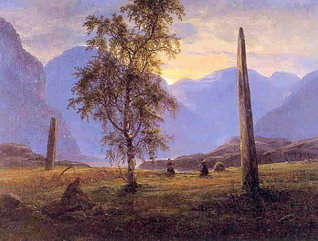 "Hoestarbeide mellom bautasten," 1839
Painting by Johan Christian Dahl |
|
| |
|
|
|
|
| |
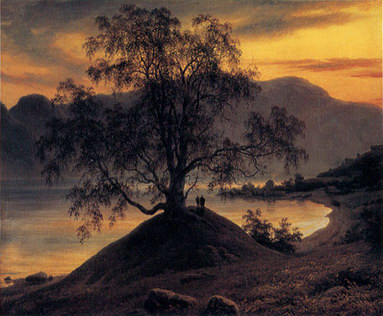
"Slindebirken," 1893
Painting by Thomas Fearnley
m
m
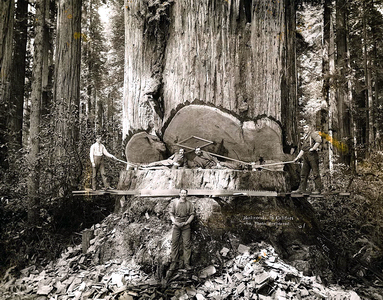
Bra002
Photo: Gen |
|
Kjempetreet, gravhaugen og bautasteinen var helligdommer i norrøn fedrekult. De ble derfor viktige motiver i nasjonalromantisk kunst.
.
The giant tree, the burial mound and the memorial stone were sacred in norse ancestral cult. Therefore they were important motives in the art periode of National Romantisism.
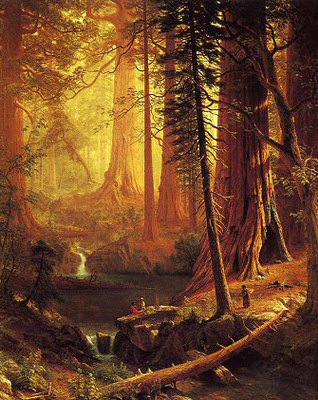
Bra002
Photo: Gen |
|
| |
|
|
|
|
| |
A logger's camp on Vancouver Island, British Columbia, c. 1890. Watercolour by E. Sandys (active 1880-1900). Credit: E. Sandys, National Archives of Canada
mmmmmm
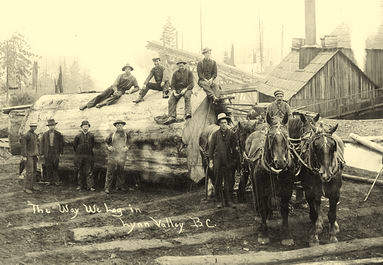
"The Way We Log in Lynn Valley BC"
Old postcard |
|
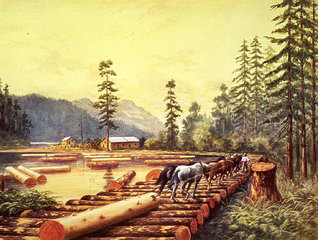 Bra002
Photo: Gen |
|
| |
|
|
|
|
| |
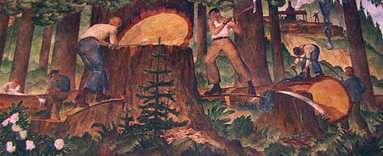
Bra002
Photo: Gen
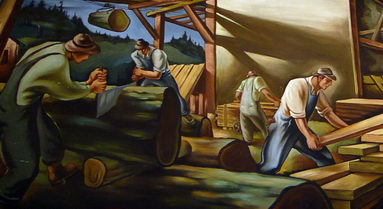
|
|
|
|
| |
|
|
|
|
| |
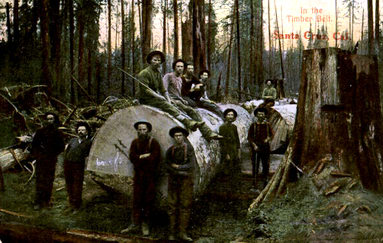
Bra002
Photo: Gen
|
|
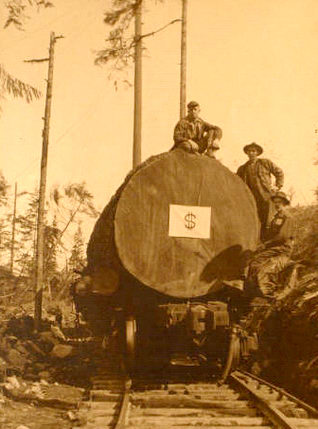
Bra002
Photo: Gen |
|
| |
|
|
|
|
| |
|
|
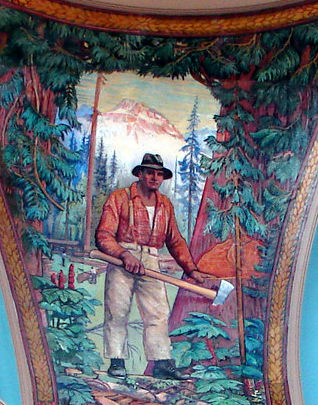 |
|
| |
|
|
|
|
| |
| |
|
|
|
Queen Char |
Beec |
Fall |
Old Y |
| |
|
|
|
Horse Ch |
Quet |
Old Bee |
Old |
| Postcards Celebrating the Death of Big Trees |
|
|
|
| |
|
|
|
|
| |
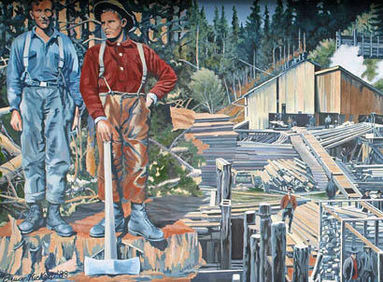
Murals, Town of Chemainus, Vancouver Island, British Columbia, Canada |
|
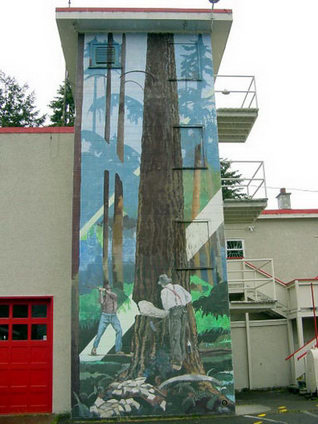 |
|
| |
|
|
|
|
| |
mmmmmmm
mmmmmm
mmmm
mmmm 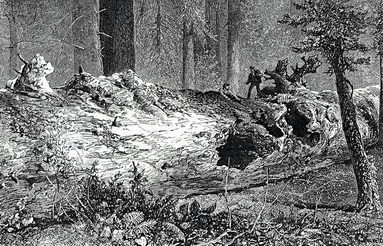
Bra002
Photo: Gen |
|

Bra002
Photo: Gen |
|
| |
|
|
 |
|
| |
One of Sweden's greatest painters is the wildlife artist Bruno Liljefors (1860 – 1939). Liljefors lived during a period when the forests of Sweden were undergoing industrial clearcutting to supply the new global market economy. The vanishing native fauna and flora was disturbing to many of Liljefors' contemporaries such as August Strindberg. Liljefors painted the wild habitats of game animals and birds, such as a grouse hen nesting in an old pine tree (below) and reaffirmed the importance of Nordic nature to Swedish national identity. |
|

Nordic fo |
|
| |
|
|
 |
|
| |
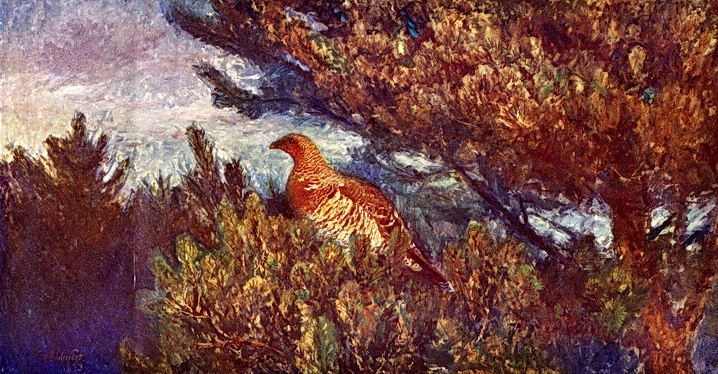
"Tjaederhoena" (Grouse hen nesting in a pine tree), 1889.
Painting by the Swedish artist Bruno Liljefors (1860 - 1939) |
|
| |
|
|
 |
|
| |
Most forests in Sweden are younger than 100 years and dominated by single species tree plantations. Both the average tree age and age range of large diameter trees has decreased radically due to industrial logging so that trees older than 400 years are very rare. The situation was different in 1892, prior to industrial forestry, when Prince Eugene painted "Skogen," his well known scene of a dense Nordic forest with light filtering through (right). Painted at the medieval estate of Fjaellskaefte, which today is preserved as a nature reserve, the work expressed a deep respect for the cathedral-like deep forest. Nature was a primary artistic motif for the Swedish prince and his contemporaries, including wildlife painter Bruno Liljefors and playright August Strindberg. As founders of the National Romantic movement, they celebrated the native flora and fauna as an important part of Swedish national identity.
Today most old growth forests in Sweden have vanished and the continued "rape and ravishment of the forest, people and animals" by the state owned Sveaskog (below) has become infamous. See shocking photos of clearcutting ("Kalhugge") that document Swedish industrial forest destruction by Sveaskog and other logging corps on the website "Verkligheten i Skogan" (Truth of the Forest).
|
|
rest. Painting by Prince Eugene, 1900
Goeteborgs konstmuseum
Sveaskog's timber is certified by the Forest Stewardship Council (FSC), although the company's logging of intact old growth and high biodiversity forests violate FSC rules. The Swedish Society for Nature Conservation quit FSC Sweden in 2007 because of the council's low standards and lack of transparency. An appeal to end ancient forest destruction has been made: "The big forest companies do not live up to their agreements. Nature preservers . . . plead to the countries who import forest products from Sweden to put pressure on the forest industry and the Swedish government to stop the destruction of the last primeval forests" Skydda Skogen. |
|
| |
|
|
 |
|
| |
|
|
| |
©
Credits & Contact |
|
| |
|
|
|
|

